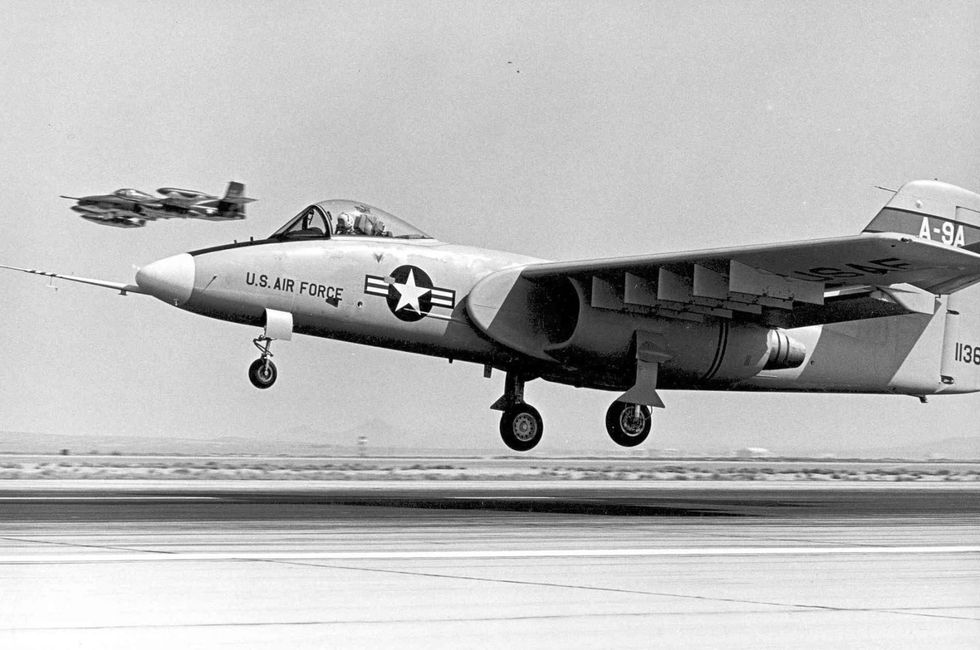Unbuilt Fighter Prototypes : The Untold Stories of Lost U.S. Fighter Planes Designs.
Exploring Forgotten Aviation Dreams
America’s aviation history is filled with remarkable achievements, iconic aircraft, and technological leaps.
Yet, amidst the successful stories lie the forgotten dreams ( Unbuilt Fighter Prototypes) of fighter planes that never took to the skies. In this article, we delve into the annals of aviation history to uncover 12 American fighter planes that never were.
Lost in Time: Unbuilt Fighter Prototypes
Bell XP-59 Airacomet, 1942
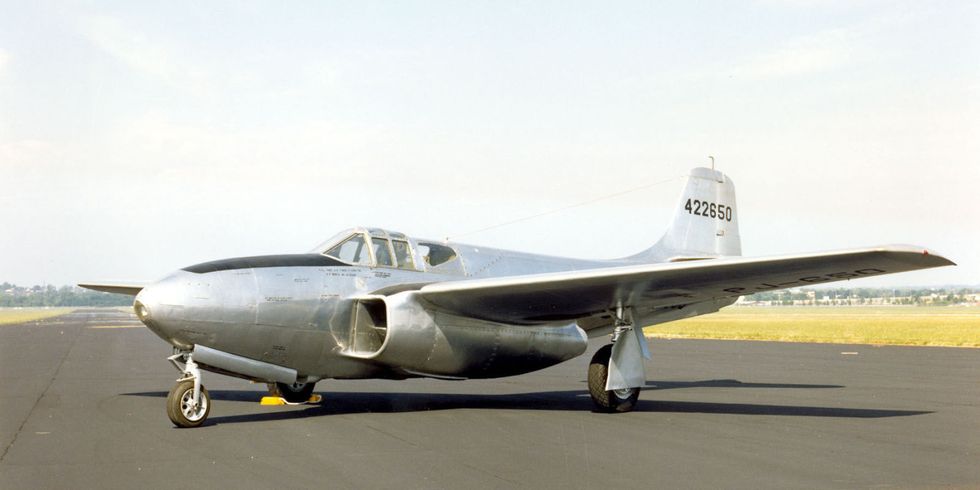
The Bell XP-59 Airacomet, America’s first jet fighter, was a little ahead of its time. After seeing British scientist Frank Whittle’s jet engine during testing in England, American generals ordered development to start in 1941.
Bell Aircraft modified Whittle’s design to include two General Electric 1-A turbojets in a conventional straight-wing monoplane that was similar to the period’s propeller-driven fighters.
In October 1942, the Airacomet made its maiden flight. Early development was hampered by issues with its engines, but by 1943 the XP-59A was capable of 409 mph at 35,000 feet.
It was almost on par with the greatest American fighters powered by propellers thanks to it, but its jet engine was unstable. Additionally, the craft’s limited acceleration made it a poor choice for a weapons platform.
In the end, it was determined to be unfit for warfare. 50 X/Y-59 production models and nine X/Y-59 prototypes were made, and they were all utilized for jet transition training for a relatively limited period of time before 1945.
Ryan XF2R-1 Dark Shark, 1946
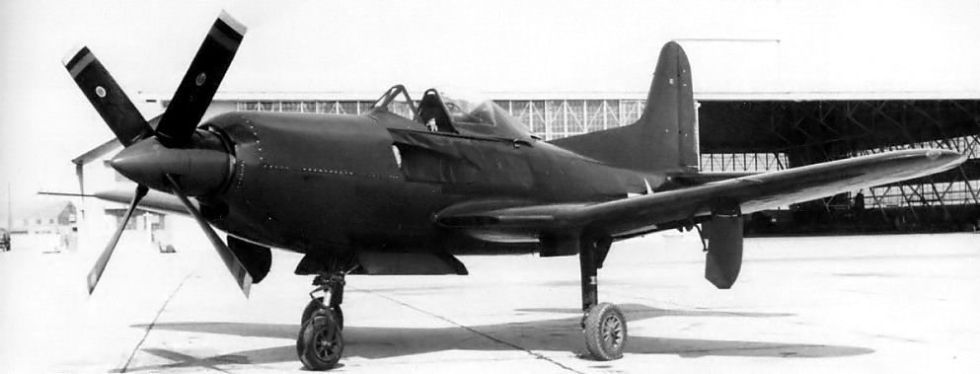
The Ryan XF2R-1 Dark Shark was created in response to the Navy’s ongoing interest in jets and was intended to outperform the Bell XP-59 in one crucial area: its acceleration would be high enough for the plane to take off from an aircraft carrier.
A “composite fighter,” a plane that combined a turboprop with a turbojet, was the first option. In specifically, the Ryan XF2R-1 combined the same GE turbojet used in the XP-59 with a prop engine producing 1700 horsepower.
The Ryan XFR-1 Fireball, an early aircraft with a GE jet and a piston engine, served as the basis for the Ryan XFR-1 Dark Shark, which could fly only on its jet or turboprop.
It could reach speeds of nearly 500 mph with both lit. The first Navy turboprop, the XF2R-1, took to the air in November 1946.
The XF2R-1 program, however, was abandoned after just one prototype as a result of circumstances brought about by the end of the War.
Lockheed XF-90, 1949
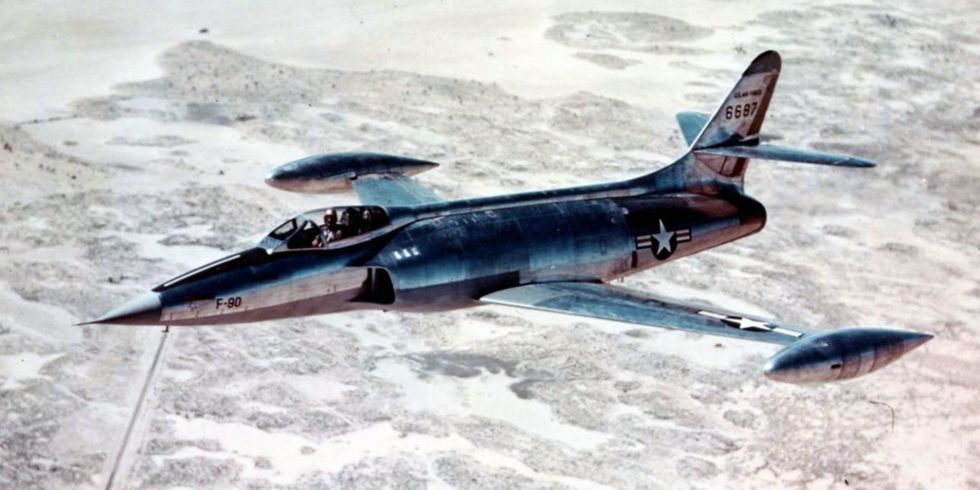
Looking ahead as WWII drew to a close, the Army Air Corps issued a request for a long-range advanced fighter that would be able to escort bombers.
Lockheed came up with a design based on its P-80 Shooting Star, but instead of a single engine and straight wing, the XF-90 featured two Westinghouse J34 turbojets— 6,200 lbs total thrust—and 35-degree swept wings. Two prototypes were built, the first flying in June 1949.
The XF-90 proved fairly maneuverable but was underpowered and ultimately lost out to a competing design—the McDonnell XF-88—which itself led to the F-101 Voodoo.
The good-looking XF-90 still holds the distinction of being the first USAF jet with an afterburner and though it wasn’t for service, it was regularly featured in a 1950s DC Comics series called “Blackhawks.”
Convair XF2Y Sea Dart, 1953
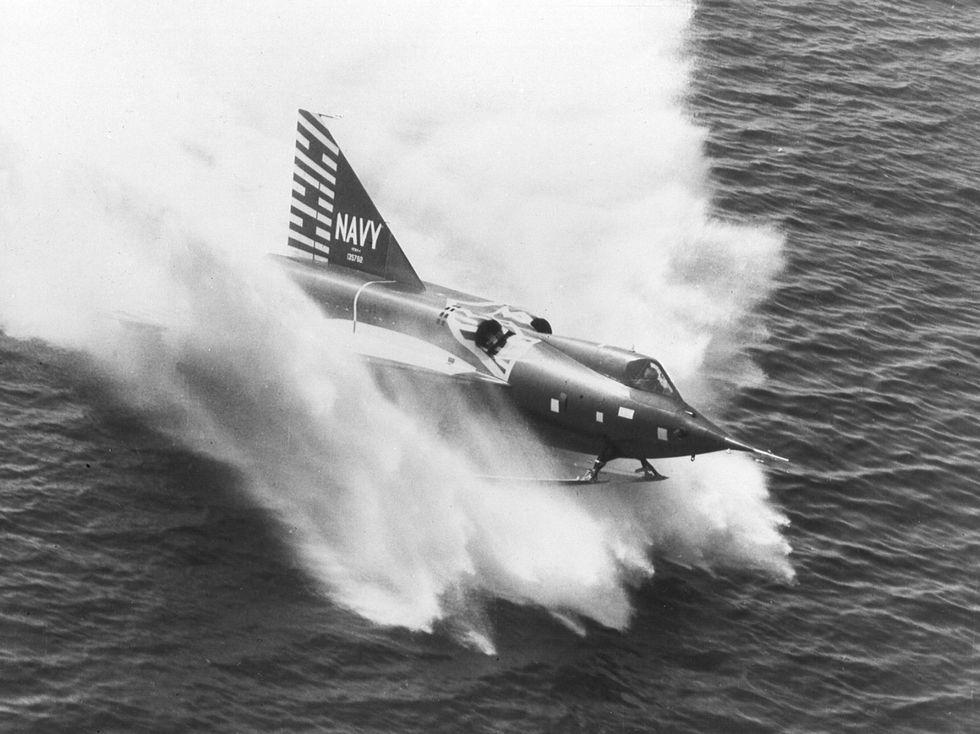
Even in the world of fighter-planes-that-weren’t, the Sea Dart is a rare creature—a seaplane jet fighter.
Japanese seaplane fighters had shown tactical advantages in WWII and with carrier jets of the time unable to attain supersonic speed, a seaplane was seen as an alternative for the Navy’s supersonic interceptor program in 1948.
The Sea Dart’s radical delta-wing design incorporated a pair of turbojets with a watertight fuselage and twin retractable skis for takeoff and landing. The first Sea Dart flew in April 1953 and five were built.
While later prototypes used a more powerful single engine and single ski, the Sea Dart remained underpowered and experienced severe vibration problems on the water.
One did break the sound barrier in a shallow dive however, making it the only supersonic seaplane ever built. A crash during a press demonstration in 1954 and improving carrier fighters ultimately doomed the troubled Sea Dart, which flew its final flight in 1957.
Read Next – 10 Best Fighter Jets In The World In 2023
The Legacy of Unbuilt Fighter Prototypes
Unbuilt Convair XFY-1 Pogo, 1954
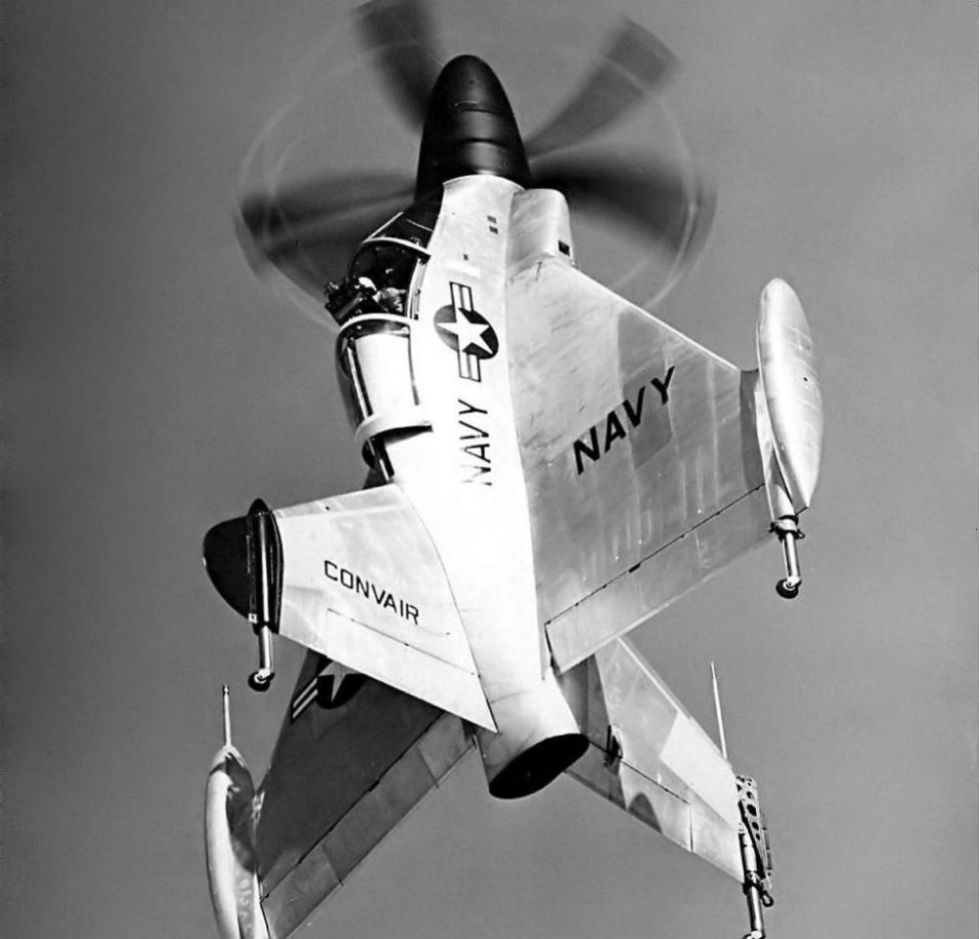
Ever since the advent of lightweight, remarkably powerful turboprop powerplants, engineers and officers alike have been tantalized by the prospect of a fighter that could take off vertically.
This eventually came to pass with the Harrier and the F-35B, but Convair wanted to explore the concept and proposed a Vertical Takeoff (VTO) fighter to the Navy as early as 1951.
A competing VTO design from Lockheed took off conventionally and then hovered, but Convair’s stubby little Pogo made all of its test flights with vertical takeoffs.
The first test in August 1954 saw it lift off from its tail, hover at 40 feet, gently descend to the ground, and rise again to 150 feet before landing for real.
In November it made the world’s first vertical takeoff to be followed by a transition to conventional flight. Then, after zooming low over the runway, it pulled sharply upward, stopping in mid-air before settling tail-first onto the runway.
Just one was built and after evaluation, the Navy scrapped the plan. But the Pogo’s legacy lives in thanks to its requirement of a zero-altitude ejection seat, the development of which has absolutely benefited future pilots of other, less quirky fighter aircraft.
North American YF-107A, 1956
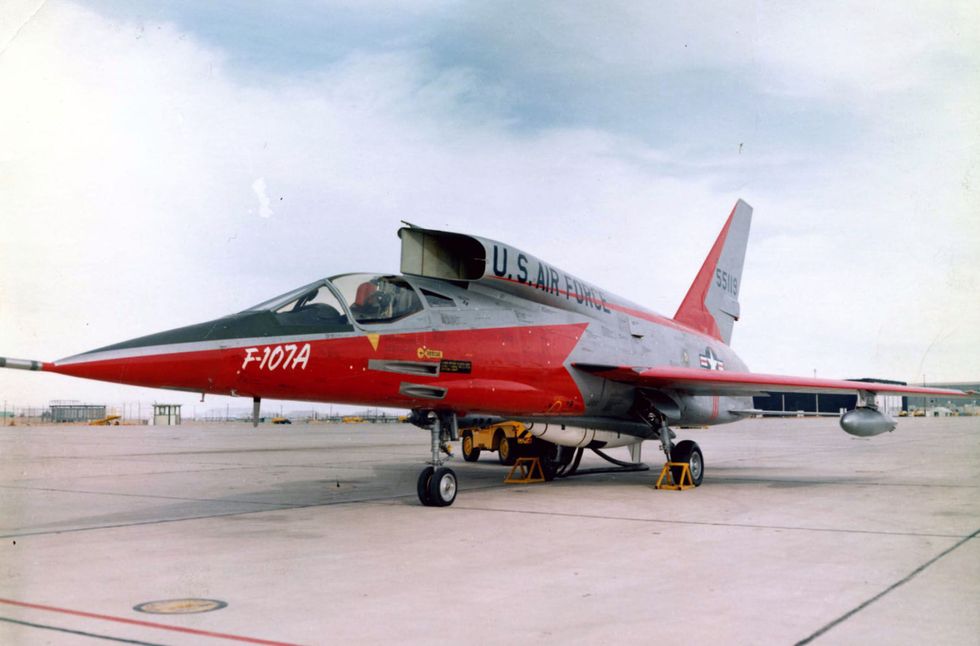
The Air Force’s need for a big, nuclear-capable fighter/bomber in the mid-1950s led North American to use its successful F-100 Super Sabre design as a jumping off point for the new YF-107A.
The craft would need a big radar antenna placed in the nose where the F-100 had its intake, so the YF-107’s designers placed the intake above and behind the cockpit, giving the airplane its distinctive look and earning it the nickname “man eater.”
With features including a single-piece all-moving rudder and spoilers instead of ailerons, the YF-107 was both innovative and Mach 2-capable, first flying in September 1956.
Three were built but they had stiff competition from Republic’s F-105 Thunderchief which was ultimately chosen for the job.
Vought XF8U-3 Crusader III, 1958
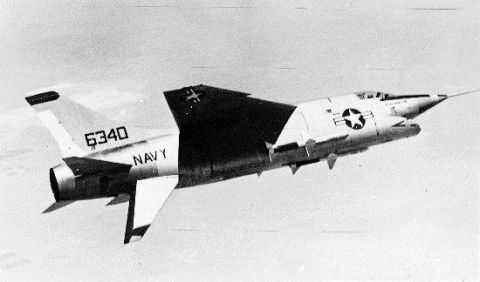
Northrop F-20 Tigershark, 1982
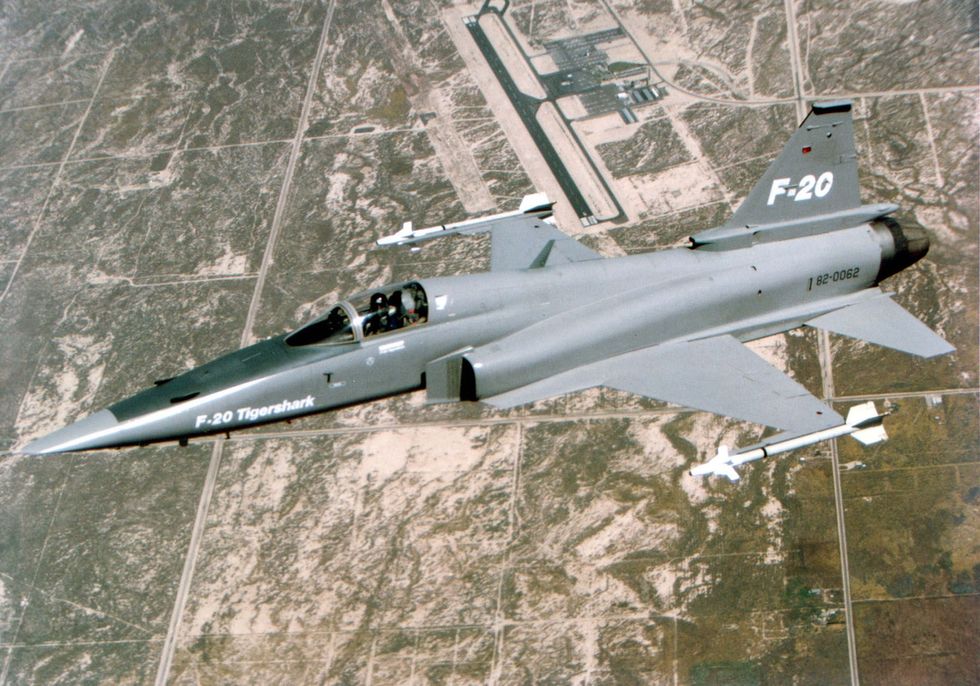
Northrop’s F-20 was a variation of its widely-used F-5E Tiger II fighter. Work on the F-20 began in 1975, inspired by the Pentagon’s FX program which sought a light fighter that would be competitive with the latest Soviet aircraft but without the sensitive technologies used in the USAF’s F-15 and F-16.
That way, the F-20 would be readily exportable to friendly foreign nations without running the risk of cutting-edge technology falling into Soviet hands.
The F-20 fit the bill, improving on the F-5 with a redesigned wing, tail, and a single GE F404 engine like that used in the F-18.
The extra thrust, combined with composite materials, fly-by-wire flight control, and modern avionics, added up to a capable fighter/attack aircraft with a much lower price tag than the F-15 or F-16. The Tigershark first flew in August 1982 and though three were built, changing geopolitics, State Department and Air Force foot-dragging, and competition from the F-16 ultimately precluded sales, killing the otherwise promising aircraft in 1986.
General Dynamics F-16XL, 1982
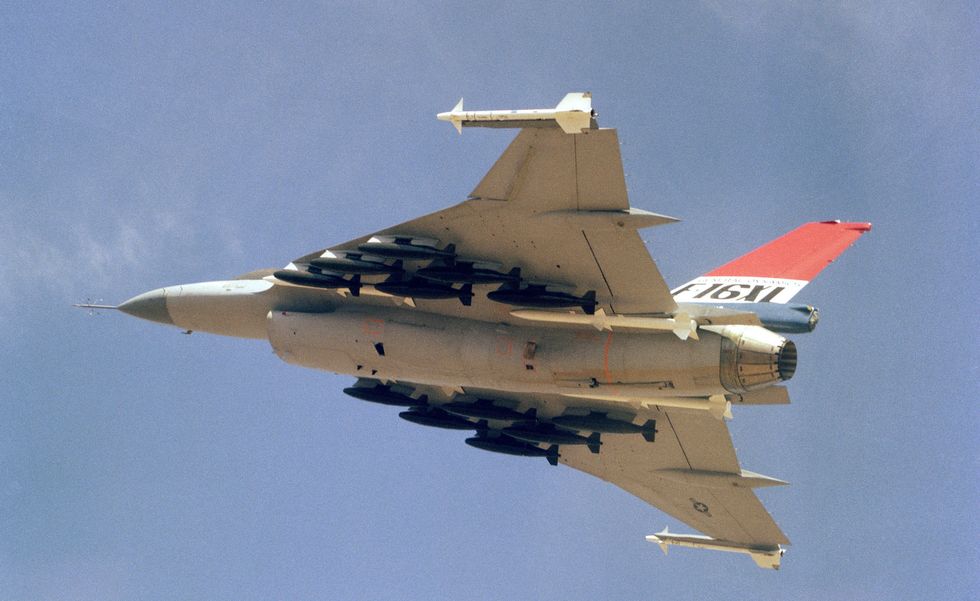
The F-16XL’s heritage is evident based on its name alone, but why add a big delta wing to the Fighting Falcon? The “cranked delta” wing that General Dynamics designers added gave the F-16 more lift, more fuel, and better stability at high speed and low altitude.
These were desirable characteristics in the Air Force’s Enhanced Tactical Fighter program, which pitted the XL against the F-15E Strike Eagle in a competition to replace the F-111 in the deep interdiction role.
The F-16XL sprang from an internal General Dynamics program started in 1977 and first flew in July 1982.
It handled well at high speed and low altitude and had more range than the Falcon. Still, the USAF chose the F-15E which could carry more payload, had redundant twin engines, and a two man crew.
Northrop-McDonnell Douglas YF-23, 1990
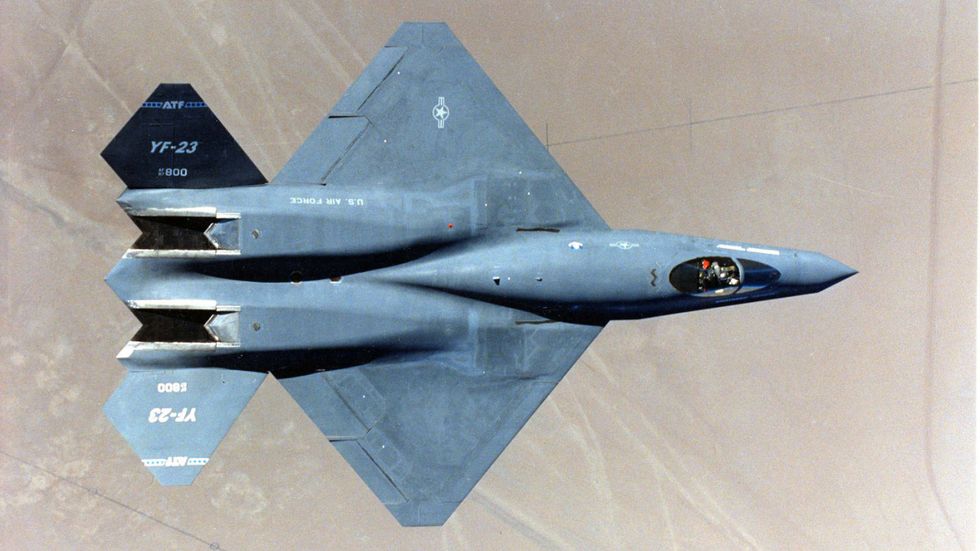
Conceived for the USAF’s Advanced Tactical Fighter competition to replace the F-15, two YF-23 prototypes were built in 50 months.
Like the YF-22, which would go on to become the the Lockheed/Boeing F-22 Raptor, the YF-23 was expected to be stealthy, maintainable, maneuverable, and able to cruise at supersonic speeds without using afterburners.
Northrop teamed with McDonnell Douglas on the YF-23, which first flew in August 1990. It was faster and stealthier than the F-22, and arguably better looking.
But the Raptor was more maneuverable and fired air to air missiles during its evaluation while the YF-23 did not. The USAF also considered the YF-22 less technically risky and chose it in 1991.
In 1994 Northrop raised the possibility of using the YF-23 as an interim stealth bomber but the Pentagon didn’t bite.
Boeing X-32A/B, 2000
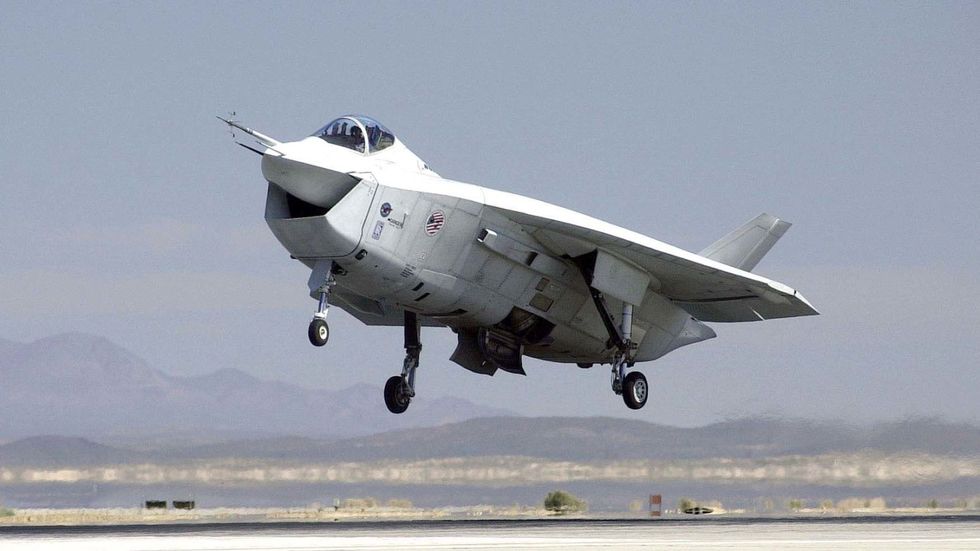
Boeing’s X-32 was built for the Joint Strike Fighter competition, going up against Lockheed’s X-35.
Designed to minimize the cost that can often come with stealth, the X-32 incorporated a single-piece delta wing and a direct-lift thrust system similar to that used on the Marines’ AV-8B Harrier for vertical takeoff/landing. Design work started in the mid-90s and the X-32 first flew in September 2000.
The two prototypes built were separate conventional takeoff and STOVL versions. Lockheed’s X-35, meanwhile, could transition between conventional/STOVL configurations in mid flight.
That, and the X-35’s greater thrust, lift-fan design—which enabled it to take off in less than 500 feet, go supersonic and land vertically in one flight—gave it the edge over the X-32.
Frequently Asked Questions (FAQ)
Q1: Why were these fighter planes never built? A1: Various factors contributed to the cancellation of these fighter planes, including budget constraints, changing military priorities, technical challenges, and evolving geopolitical circumstances.
Q2: What makes these fighter plane designs unique? A2: Each of these fighter plane designs had distinctive features, whether it was forward-swept wings, vertical takeoff capabilities, or unconventional circular wings, pushing the boundaries of aviation technology.
Q3: Did any of these unrealized fighter plane concepts influence future aircraft development? A3: Yes, some of these concepts and technologies influenced future aircraft designs and contributed to the evolution of aviation technology.
Source wikipedia.org/wiki/General_Dynamics




